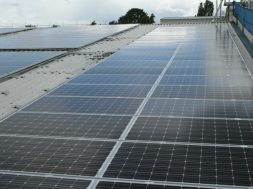
New Delhi: The government plans to raise quality norms and standards for solar modules and cells in a bid to stop cheap and badly made Chinese imports flooding the market and to ensure only high-quality modules are used for government-backed solar projects,
Most Indian-made solar modules are of sub-standard quality that do not meet the efficiency criteria of each module converting 21% of solar energy into electricity —a stepping stone to India’s 2030 target of reaching 500 GW of renewable energy capacity.
The move involves tightening the norms under the Approved List of Module Manufacturers (ALMM), introduced in 2019 to ensure quality compliance by manufacturers. Equipment from firms on the list can be sourced for government-supported schemes and projects that in turn supply power to electricity discoms. Manufacturers and solar modules are approved by the Bureau of Indian Standards (BIS) and the ministry of new and renewable energy. The list was also aimed at reducing the import dependence for solar modules.
In March, the ministry deferred the implementation of the ALMM for government-backed projects till April 2024 due to a shortage of modules and the prospects of rising solar power tariffs.
Union minister for new and renewable energy Raj Kumar Singh in an interview said the extension would help projects which have been delayed due to the covid-19 pandemic and a shortage of modules. “You will see projects coming up once these extensions are over,” he said.
Noting an absence of sufficient module capacity with the required efficiency, the minister said: “Out of the 22 GW, almost about 13 GW is of lower efficiency.
“The grid-scale efficiency of 21% and above is only 9 GW. For making module of 21% efficiency, you need cell of 22% and 23% efficiency, for which the manufacturing is only 1.5 GW. This is a constraining factor, as remaining cells have to be imported. And under-construction projects stand at 52 GW.” The total capacity for manufacturing solar photovoltaic modules in the country, as per ALMM is about 22.4 GW per annum.
He also stressed the need to keep the cost of renewable energy down as India plans to become globally competitive in green hydrogen, which is produced with renewable energy.
Describing ALMM as a quality control mechanism, rather than a non-tariff barrier, Singh, who also holds the portfolio of minister of power, said: “We are planning to bring changes to the ALMM scheme. A quality control mechanism should ensure that outdated products and technologies are kept out. Any technology which is outdated will not be allowed under ALMM. We will specify a minimum efficiency level will not be allowed after a year (when ALMM comes into effect).”
The proposed changes are currently being examined and the norms are likely to be announced in the around six weeks, he said, adding, “Obsolete technology and modules will not find a place in ALMM.”
The list currently has a total of 91 module manufacturers.
On 9 March, 2021, the Centre announced that from 1 April, 2022 any import of solar PV modules would attract basic customs duty (BCD) of 40% and import of solar PV cells would attract BCD of 25% in a bid to lower imports from China.
The government has also come up with two tranches of the production-linked incentive scheme. In the union budget for 2022-23, the Centre announced an allocation of an additional ₹19,500 crore under the solar PLI scheme to manufacture high-efficiency modules, with priority to fully integrated manufacturing units from polysilicon to solar PV modules. The allocation under the first tranche was ₹4,500 crore.
According to the government, manufacturing capacity totaling 7.4 GW is expected to become operational by October 2024, while 16.8 GW capacity would be ready by April 2025. The remaining 15.4 GW capacity would be operational by April 2026 under the incentive scheme.











